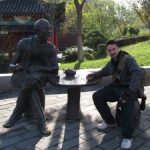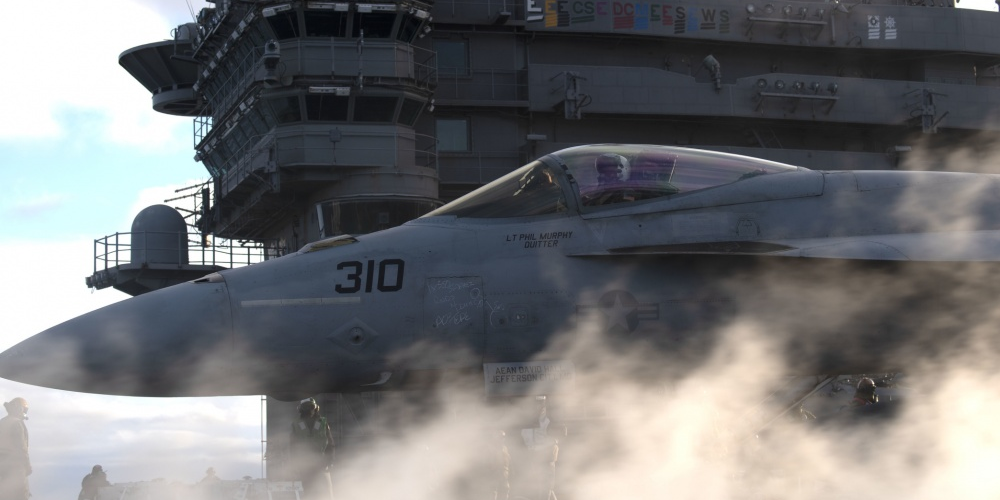- Naval aviators have a very exciting but dangerous job, and Insider recently had the opportunity to talk to two seasoned aviators about one of the US Navy’s most intense jobs: Flying off a moving aircraft carrier.
- Lt. Cmdr. Matt Deppen, who has trapped on almost every aircraft carrier in the Navy, and Capt. J.J. Cummings, the commanding officer of the first-in-class USS Gerald R. Ford, talked to Insider about the thrills and the dangers of carrier take-offs and landings.
- “There’s no ride like it in the world,” Cummings said. Deppen called catapulting off the ship “the most exciting roller coaster you will ever be on in your life.”
- Visit Business Insider’s homepage for more stories.
The US Navy’s carrier-based pilots are skilled aviators who have to be able to take off and land on a ship moving swiftly through the open ocean. Two experienced naval aviators recently talked to Insider about the thrills and the dangers of the job.
Fighters and other aircraft aboard the US Navy’s Nimitz-class aircraft carriers are launched using steam catapults. The new Ford-class carriers use the Electromagnetic Aircraft Launch System (EMALS), a more advanced catapult system.
“Taking a cat shot is the most exciting roller coaster you will ever be on in your life,” Lt. Cmdr. Matt Deppen, who has served for 11 years and trapped on every aircraft carrier in the Navy except the USS Ronald Reagan, told Insider.
"It's zero to a buck 70 [170 mph] in two, two and a half seconds," Capt. J.J. Cummings, commanding officer of the USS Gerald R. Ford, told Insider. "The ride, I argue, is the best part of this. The traps are great, but in my view, the catapult is a blast, literally."
"It's the ride of a life. It's great," he explained. "I think the best part of flying off the ship is the catapult shot. There's no ride like it in the world."
The USS Gerald R. Ford recently wrapped up its first Fleet Replacement Squadron carrier qualifications for naval aviators while operating in the Atlantic Ocean. Cummings said that activities aboard the first-in-class ship have brought back memories of his first catapult launch more than 20 years ago.
"I still remember vividly my first trap on board the USS America in a T-2 Buckeye, and I remember even more vividly my first catapult shot," he told Insider.
"As the catapult fired, I wasn't ready for that. Those Gs," Cummings added, revealing that he still remembers shouting out as his aircraft shot off the carrier's flight deck.
'The craziest 15 to 18 seconds of your life'

Landing a plane on an aircraft carrier can be exciting too, but it isn't an easy task. It can be both difficult and dangerous, Deppen told Insider, saying, "I think the toughest thing is landing a plane onboard an aircraft carrier."
To land on a carrier, Navy pilots have to bring their aircraft in just right. Once on deck, a tailhook on the plane will snag a collection of arresting wires, bringing the plane to a stop.
"When you roll in behind the boat, your heart is pounding," Deppen said. "It's the craziest 15 to 18 seconds of your life. It's the toughest thing we do in naval aviation."
There is a thin margin of error, he explained, adding that "it can go south really quickly and develop into a very bad situation." He told Insider it can be "very terrifying."
The stress of landing on a carrier gets ratcheted up even more at night, when the carrier is just a "dot of light miles out and you're in the middle of the ocean with no land for a thousand miles away," Deppen said.
"You're like, well, crap, I have to land on that thing. It is not easy, and it really gets your blood flowing."
Still, the naval aviators love to fly. "The plane handles like no other airplane I can get my hands on," Deppen said of the F/A-18 Super Hornet, the Navy's main carrier-based fighter. "I just think it's awesome."

